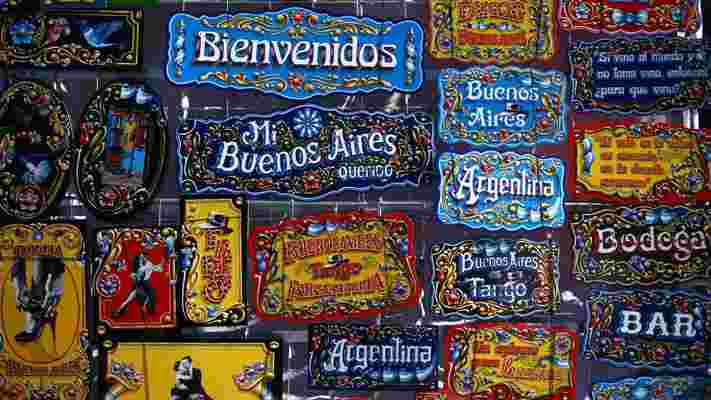Take a walk along Buenos Aires’ cobblestone streets and you will likely encounter one of the city’s most iconic trademarks: the fileteado porteño . Characterised by its colourful swirls – filetes – artistic lettering and flowery motifs, this popular decorative art can be found almost everywhere in the Argentine capital, from building facades to taxi cabs to tattoo parlours. But it wasn’t always like that.

Fileteado originated at the beginning of the 20th Century in Buenos Aires’ wagon factories when Italian immigrants started to paint the sides of these traditionally grey carriages with simple lines and adorning elements. Over time, fileteadores (the artists) added more complex components to their work, such as light-and-shadow effects, flowers, plants, animals, ribbons and popular sayings in Gothic-style typography, which all characterise the art today.
As the artform expanded from horse-drawn carriages to store signs and more modern vehicles, it became looked down upon by Buenos Aires’art elite. In fact, in 1975, the city passed a law banning the paintings from the city’s buses, claiming it was potentially distracting for drivers. The law was only repealed in 2006. The 31-year ban, combined with a subsequent economic crisis in the 1980s, caused many of the studios that once employed fileteadores to close. But fileteado has experienced a resurgence in recent decades, with artists sourcing alternative canvasses for their work.
In 2004, Buenos Aires’ General Directorate of Museums had fileteadores paint six facades on Jean Jaures Street, on the same block of the Carlos Gardel House Museum . Today, these concrete canvasses make up the largest open-air fileteado exhibition.
In 2015, fileteado porteño was inscribed as a Unesco Intangible Cultural Heritage , and today, some groups offer tours where participants can learn how to make their own fileteado artwork.
(Video by Rafael Estefania; text by Luana Harumi)
For more on this and other stories watch The BBC Travel Show – every weekend on the BBC News Channel and BBC World News.
BBC's Travel Show brings you the latest insider travel news, a wealth of destinations, amazing experiences and features and practical hints, tips and advice for your holidays.
If you liked this story, sign up for the weekly bbc.com features newsletter called "The Essential List". A handpicked selection of stories from BBC Future, Culture, Capital and Travel, delivered to your inbox every Friday.
